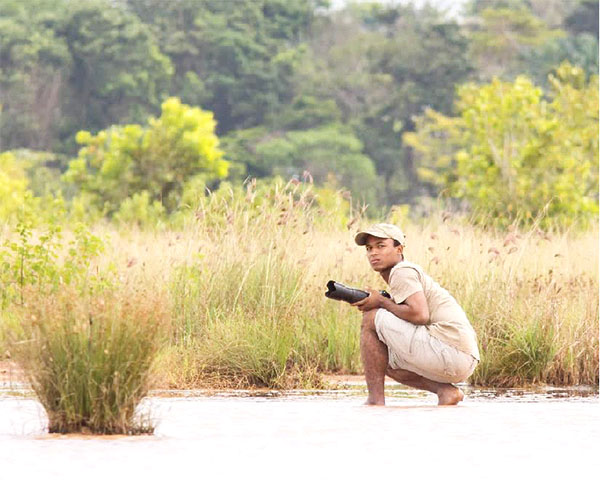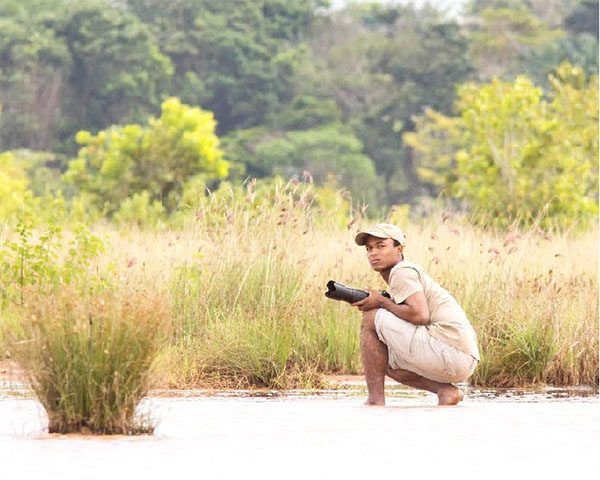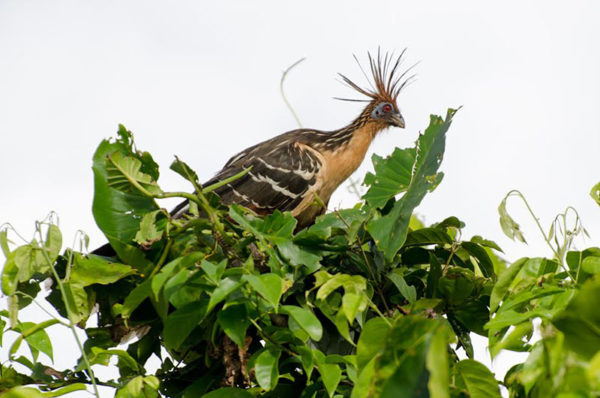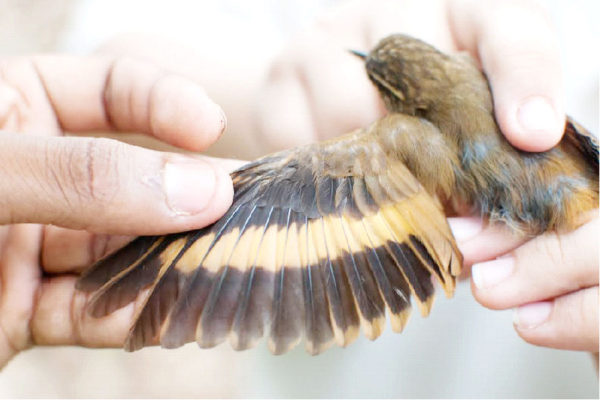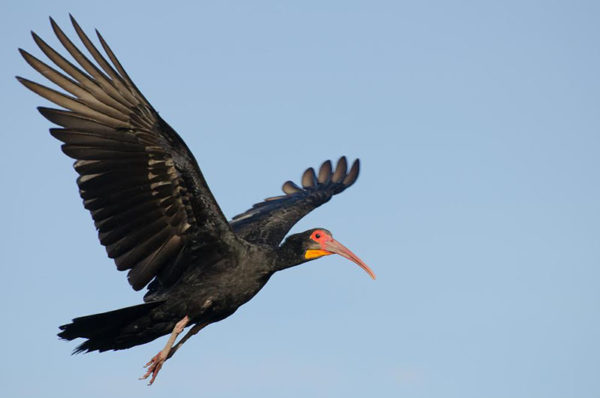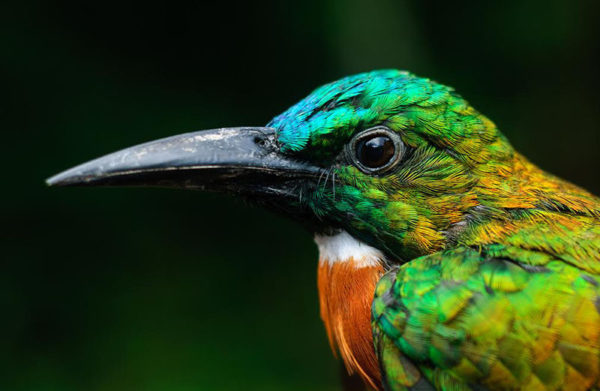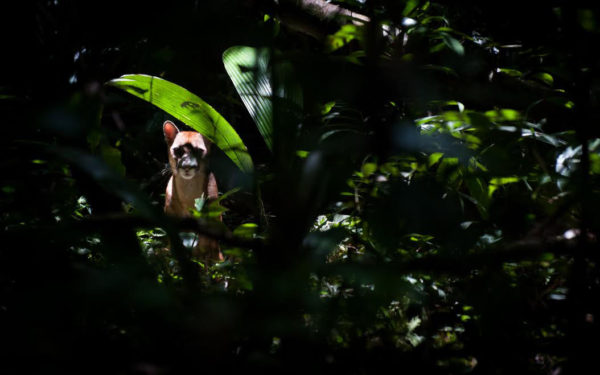It was by a strange twist of fate that 23-year-old Meshach Pierre developed an interest in conservation biology as his initial intention had been to pursue a career in medicine.
Born in Guyana, Pierre said he migrated to the British Virgin Islands at the age of seven but subsequently returned after completing his primary education. Upon his return, he was enrolled at Marian Academy where he completed his secondary education,
before moving on to the University of Guyana (UG), where he began studies towards a degree in biology.
“I started that degree with the idea that I was going to do medicine, not because I really wanted to, but more so because I never really thought about what I wanted to do,” he said. “After a time I realized that I wasn’t really into medicine and that I was really more into biology itself.”
His interest in biology was amplified even further after conducting field work alongside international research scientists, something that happened totally by accident.
“These scientists were here to do a project on Manikins [a type of bird] and they wanted to take some UG students in the field with them. I think I happened to be walking by this group of students speaking to a professor just as one girl said she couldn’t make the trip and the professor just turned and asked me if I wanted to go and that basically is how I started,” Pierre shared.
“It’s really one of those weird coincidental events if you think about it. Sometimes I wonder what I would have been doing had it not been for that specific opportunity,” he added.
For the trip, Pierre said they travelled to St Cuthbert’s Mission, an indigenous village up the Mahaica Creek, where they were given the opportunity to observe the researchers in action and even witnessed a few scientific discoveries during the trip.
Though his participation at that time was minimal, the young man said he found himself to be fascinated with the work he saw being carried out by the researchers.
“For a lot of the time spent there, I was pumping water because you know I was a student and I didn’t really know how to do the research; we did participate at various points but for the intense stuff we were only be allowed to observe,” Pierre said.
“I got to see them working and it was really interesting to see them making discoveries right in front of you and that is one of the experiences that kind of made me settle on this being what I want to do.”
Pierre, in a recent interview with Sunday Stabroek, said he made the decision to switch fields somewhere between his second and third year at UG.
The year 2014 also presented the budding conservation biologist with an opportunity to work alongside Dr Brian O’Shea, Collections Manager for Ornithology – North Carolina Museum of Natural Sciences as a field assistant on Guyana’s first Bird Banding Project.
According to Pierre, the project was carried out in sections of the Iwokrama Rainforest and Surama Village as well as in Suriname under the purview of O’Shea and focused heavily on assessing the distribution, community dynamics, and spatial ecology of birds in lowland rainforest and coastal secondary forests.
It was the hope that such a project would stimulate interest in birds and nature while generating data to enhance conservation efforts.
“Not a lot of the birds found here in South America are understood, so simple things like these play a role in understanding how to keep them alive,” Pierre related.
Birds are not the only species to have been studied by Pierre, as he was also awarded a fellowship from Panthera, called the Winston-Cobb Fellowship, which afforded him the opportunity to study jaguar and prey populations existing in areas where there are active mining, logging and hunting activities.
It was from this study that Pierre drew the conclusion that more research is needed in Guyana, particularly ones focusing on the establishment of sustainable practices when harvesting the country’s natural resources.
“You can’t really say don’t log; I think a better way is to have more sustainable practice. The only way to do that is to understand what practices are sustainable… So I think we need lots more research and maybe from that, we would be able to make recommendations on how to change these things over time,” he said.
A part from his work as a conservation biologist, Pierre also happens to find interest in photography, a passion that evolved after working alongside a visiting researcher and photographer Andrew Snyder, who allowed Pierre the use of his camera during Operation Wallacea in 2013.
“We worked together and on that trip he let me use his camera and as history has it, I ended up buying that same camera from him and I started practicing,” he shared.
According to Pierre, photography allows him to share his experiences not only with his fellow Guyanese, but also the rest of the world, with the hope of enhancing the appreciation of Guyana’s diversity.
“I go to all these really interesting places and I really never appreciated Guyana until I had these experiences and I think a part of it is that I want to share that experience with others because some of the spots I have been to are truly stunning,” the young man said.
“Guyana is a wonderfully diverse country and I think it’s really easy to get tunnel vision in [the city] where you see one thing over and over. I think it’s really good for people to get out and see more of the country because after all the coast is only 8% of Guyana,” he added.
Challenges
According to Pierre, no two experiences are the same. There are times when he finds himself visiting villages to conduct interviews while other instances have seen him hiking Mount Ayanganna to do a bird inventory as was the case in 2014.
This being said, he believes that challenges often present themselves in him being able to source good field equipment such as hiking boots, hiking bags and sometimes something even as simple as the suitable clothing to wear when heading out into the field.
“I have been on trips that are intense like the expedition to Mount Ayanganna, which happens to be the hardest I have ever done. I lost 25 pounds in about 32 days, I was a stick when I came back; it was a great trip but it was also a very intense one,” he related.
This expedition was just one of several other similar activities undertaken by the young man, who shortly after graduating with a Bachelor’s Degree in Biology from UG in 2014, began building his capacity as a conservation biologist.
At present, Pierre is between projects, some of which he could not comment on.
“There are more projects coming up and there are a lot of things I’m interested in,” he said, before sharing his plans to pursue a Master’s Degree.
“What I want to do is improve my understanding of statistics and ecology so that I enhance my research abilities,” Pierre said.
Though he is open to whatever opportunities are afforded to him, a big part of what he hopes to do, is focus on conducting research in Guyana since he believes the research possibilities available here are endless.
“There is a lot to study in Guyana; there is a lot that nobody knows about and all of those things are important to decision making. A lot of those things we have to end up making assumptions off of other countries’ data because that knowledge may not exist or may not exist in the amount that we need.” Pierre noted.
“I don’t make such big decisions now, not to say that I am not open to it but I would rather say I am open to life itself. That being said regardless of where I am, I would like work in some part of Guyana and regardless of where I end up my plan is to do research here,” he added.
Meanwhile, his advice to those desirous of entering the field is to network with others operating within the area of study.
“I think a network with other scientists is probably the biggest tool you can have in any field, especially in one that is as communal and wonderful as conservation biology where most people are concerned with the bigger picture, which is the state of science and maintaining our natural environment and the country’s development,” the young man said.
Additionally, Pierre encourages persons to build on their experience in the field since it is his belief that a lot is learnt by doing.
“I think the best decision you can make is to spend time and try to work with scientists in the field because it helps you build connections; those connections can be really, really great in the future. So get out there; work with people and get some practical experience,” he posited.
